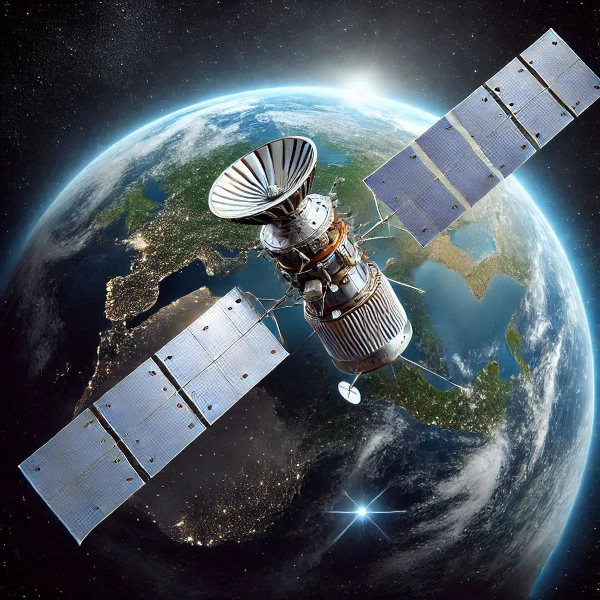
Image description: Representation of satellites in synchronous orbit around Earth. Image source: astronoo.com
The synchronous orbit is the orbit that allows a satellite to complete one orbit around its planet while the planet completes one rotation around itself. This means that if this orbit has an inclination and eccentricity equal to 0, the satellite will appear, from the planet's surface, to be "stationary," suspended in the sky always in the same position, above the equator.
When the inclination of the satellite's orbital plane is not equatorial (inclination ≠ 0), the satellite appears to oscillate from north to south, above the planet's equator.
When the satellite's orbit is elliptical (eccentricity ≠ 0), the satellite appears to oscillate from East to West.
When both the inclination and eccentricity of the satellite's orbit are different from 0, the satellite moves in the sky producing a figure-eight shape, called an analemma.
For Earth, the most well-known synchronous orbit is the geostationary orbit, where the satellite remains fixed relative to a point on the Earth's equator. This orbit is particularly useful for communication and meteorological satellites.
To calculate the synchronous orbit, it is essential to understand some basic principles of orbital mechanics:
The orbital period of a satellite can be calculated using Kepler's third law:
\[ T = 2\pi \sqrt{\frac{a^3}{\mu}} \]
For a synchronous orbit, we must equate the orbital period \( T \) to the planet's rotation period \( T_planet \).
\[ T = T_planet \]
Using the orbital period formula, we can solve for \( a \):
\[ a = \left( \frac{\mu T_planet^2}{4\pi^2} \right)^{1/3} \]
For Earth, \( T_planet \) is approximately 86,400 seconds (24 hours), and \( \mu \) is approximately \( 3.986 \times 10^{14} \, \text{m}^3/\text{s}^2 \).
Substituting these values, we get:
\[ a \approx 42,164 \, \text{km} \]
This means that for a geostationary orbit around Earth, the satellite must be at an altitude of approximately 35,786 km above the Earth's surface (since the Earth's radius is approximately 6,378 km).
Synchronous orbits are widely used for various applications:
N.B.:
Do not confuse the synchronous orbit of a satellite with the synchronous rotation of a satellite. The synchronous orbit is the orbit that allows a satellite to complete one orbit around its planet while the planet completes one rotation around itself. In synchronous rotation, the satellite takes the same time to rotate around its axis as it does to orbit around its planet. In the case of synchronous orbit, the satellite is always in the same place in the sky, and in the case of synchronous rotation, the satellite always presents the same face to its planet. This is the case with the Moon, which has a rotation period equal to its orbital period (27.3217 days), always presenting the same face to Earth but moving in the sky because it is not in a synchronous orbit.
| Planets | Mass (1024 kg) |
Volume (1012 km3) |
Radius (km) |
Rotation period (s) |
Synchronous orbit altitude (km) |
Synchronous orbit Semi-major axis (km) |
Satellite speed (km/s) |
| Mercury | 0.3302 | 0.06083 | 2439.74 | 5 053 137 | 240 025 | 242 464 | 0.30 |
| Venus | 4.8685 | 0.92843 | 6051.83 | 20 939 611 | 1 527 832 | 1 533 883 | 0.46 |
| Earth | 5.9736 | 1.08321 | 6371.01 | 86 163 | 35 796 | 42 167 | 3.07 |
| Mars | 0.64185 | 0.16318 | 3389.95 | 88 400 | 17 002 | 20 392 | 1.45 |
| Jupiter | 1898.6 | 1431.28 | 69910.97 | 35 629 | 89 811 | 159 722 | 28.17 |
| Saturn | 568.46 | 827.13 | 58232.00 | 38 256 | 53 811 | 112 043 | 18.40 |
| Uranus | 86.81 | 68.33 | 25361.46 | 61 894 | 57 173 | 82 534 | 8.38 |
| Neptune | 102.43 | 62.526 | 24622.04 | 57 837 | 58 739 | 83 361 | 9.06 |